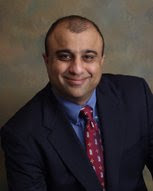FOR IMMEDIATE RELEASECONTACTS: Linda Tsai, communications director,
(408) 367-9784; linda.tsai@heart.org(SAN FRANCISCO) – More than 100 people, including prominent leaders and pioneers in the health and medical community, joined together this week evening to honor the American Heart Association’s newest local recipients of cardiovascular research funding at the Four Seasons San Francisco.
The evening reception, made possible with support from Gilead Sciences Inc., is the first ever gathering dedicated to the Association’s Northern California research grant recipients. It is also honored research recipients from the past decade.
Deepak Srivastava, M.D., President of the American Heart Association’s San Francisco Board of Directors, had this message for the awardees, “Young scientists in the room: Never give up. It does not matter if you are a post-doctoral scholar, a medical student or an undergraduate. There are opportunities for you to pursue your dream.” Dr. Srivastava first received American Heart Association funding early in his career; today he serves as Director of the Gladstone Institute of Cardiovascular Disease at the University of California, San Francisco.
Junaid Khan, M.D., President of the Association’s East Bay Board, also knows the value of an early research grant. “I received funding from the AHA as a medical student and it helped define the direction of my medical career.” Today,
Dr. Khan is Managing Partner at
East Bay Cardiac Surgery, with hospital affiliations at both
Alta Bates Summit Medical Center in Oakland and
Doctors Medical Center in San Pablo.
This year’s awardees are recipients of nearly $4 million in grants funded by the American Heart Association’s Western States Affiliate. Including funding from the American Heart Association’s National Center, $28 million in AHA research funds was awarded in the past year to Northern California institutions.
The 34 recipients of 2010 AHA Western States funding are:
Children’s Hospital Oakland Research Institute: Mistuni Ghosh, M.S.
Gladstone Institute of Cardiovascular Disease: Nathalie Gaborit, Ph.D.
Palo Alto Institute for Research and Education, Inc: Patricia Nguyen, M.D.
Stanford University and Stanford University School of Medicine: Marion Buckwalter, Ph.D., M.D.; Cindy Chung, Ph.D.; Shijun Hu, Ph.D.; Kiran Khush, M.D.; Josh Knowles, Ph.D., M.D.; Nick Leeper, M.D.; Merritt Maduke, Ph.D.; Foteini Mourkioti, Ph.D.; Mikyoung Park, M.S.; Valeria Vásquez, Ph.D.; Iqin Xiiong, M.D.; Masayuki Yazawa, Ph.D.; Yaozhong Zou, Ph.D.
University California, San Francisco: Gregory Marcus M.D.; Khanh Nguyen, M.D.; Jose Perez, Ph.D.; Sharon Poisson, M.D.; Sven Reischauer, Ph.D.; Carrie Shiau, B.A.; Jeoung-Sook Shin, Ph.D.; James Smyth, Ph.D.; Samantha Stehbens, Ph.D.; Hua Su, M.D.; Monika Suchanek, Ph.D.; Shantel Weinsheimer, Ph.D.; Yafeng Zhang, Ph.D.
UCSF and San Francisco Veterans Affairs Medical Center: Elaine Tseng, M.D.
University of California, Davis: Colleen Clancy, Ph.D.; Javier López, M.D.; Jon Sack, Ph.D.; Fan Yang, B.S.
Tuesday was also a celebration for the Bay Area’s productive cardiovascular research community and the American Heart Association’s commitment to support it.
In addition to Dr. Khan and Dr. Srivastava, other notable speakers Tuesday night included: José Cisneros, Treasurer for the City and County of San Francisco, and Luiz Belardinelli, M.D., Senior Vice President of Cardiovascular Therapeutics, Gilead Sciences Inc.
Dr. Belardinelli, an American Heart Association grant recipient early in his own career, mentioned the importance of giving back to the community.
Dr. Khan gave special recognition to the following attendees for their dedication to and support of the American Heart Association, including:
Rod Starke, Former Chief Science Officer for the American Heart Association
Fredric B. Kraemer, MD, Western States Affiliate Board Member
Hal Barron, Executive Vice President and Chief Medical Officer at Genentech
Shaun Coughlin, Director, Cardiovascular Research Institute at UCSF
R. Sanders "Sandy" Williams, President of The J. David Gladstone Institutes
Mark Hlatky, Professor of Health Research and Policy and of Medicine at Stanford University
Hans Reiser, Senior Vice President, Medical Affairs, at Gilead Science
Patricia Sprincin, Chair of the American Heart Association’s Heart and Stroke Society
John Woods, Executive Vice President and CFO of Union Bank and Chair of the Bay Area Heart Walk
Amanda Wallis-Blue, Chair of the Patron Committee for the Celebrate with Heart Gala.
These individuals are “true leaders in the world of research and leaders within the American Heart Association,”
Dr. Khan said.
The American Heart Association is the second largest single funder of cardiovascular research after the National Institutes of Health. The Association has invested more than $3.2 billion nationally in cardiovascular research since 1949.
Tuesday’s event was the first of what will become an annual celebratory gathering to highlight the lifesaving work quietly being carried out every day by so many members of the Bay Area community.
About the American Heart Association
Founded in 1924, we’re the nation’s oldest and largest voluntary health organization dedicated to building healthier lives, free of heart disease and stroke. To help prevent, treat and defeat these diseases — America’s No. 1 and No. 3 killers — we fund cutting-edge research, conduct lifesaving public and professional educational programs, and advocate to protect public health. To learn more or join us in helping all Americans, call 1-800-AHA-USA1 or visit www.heart.org.



